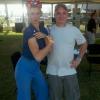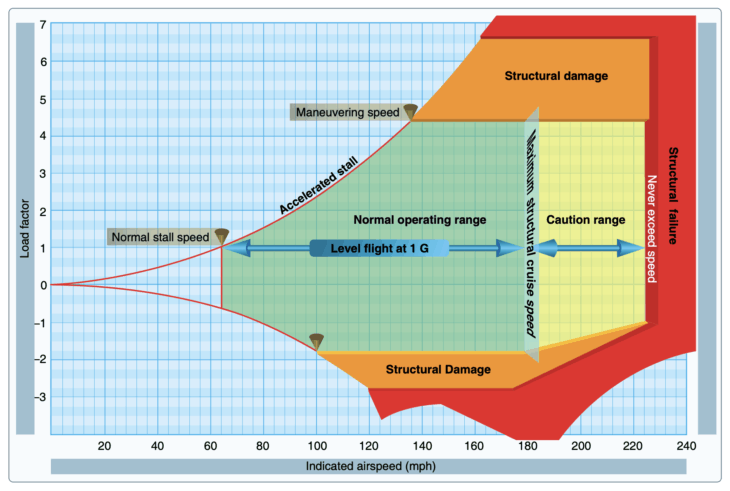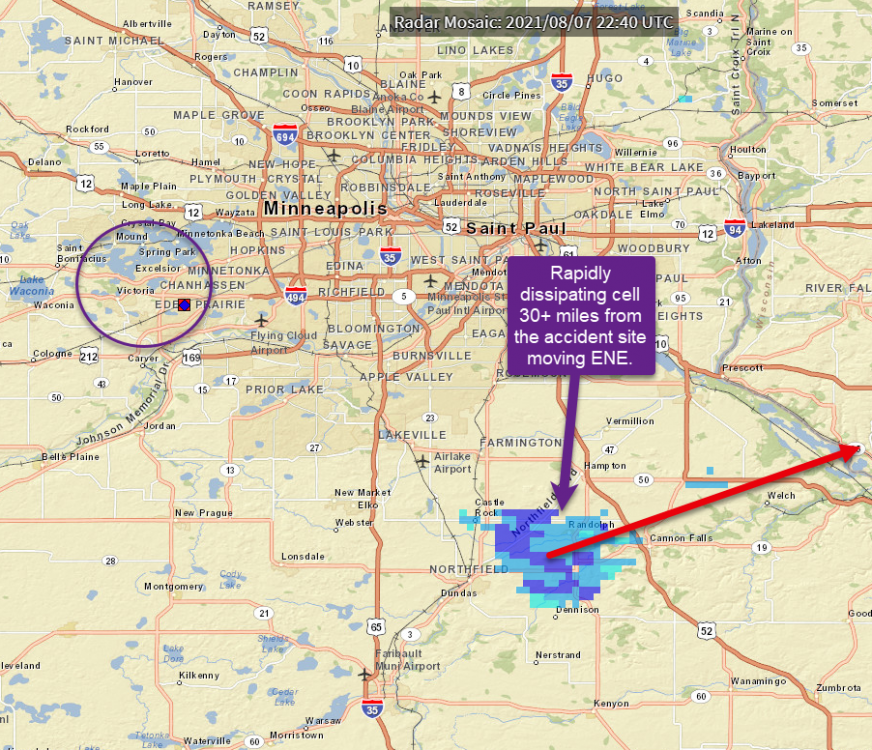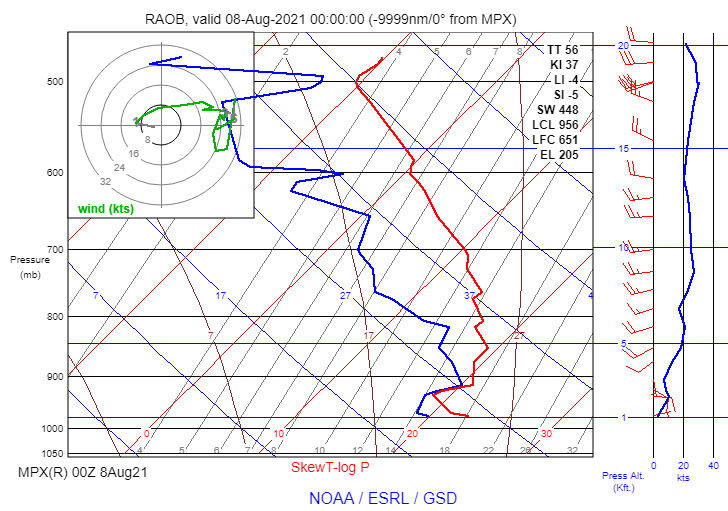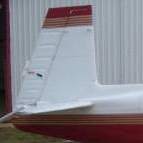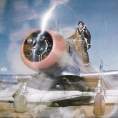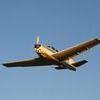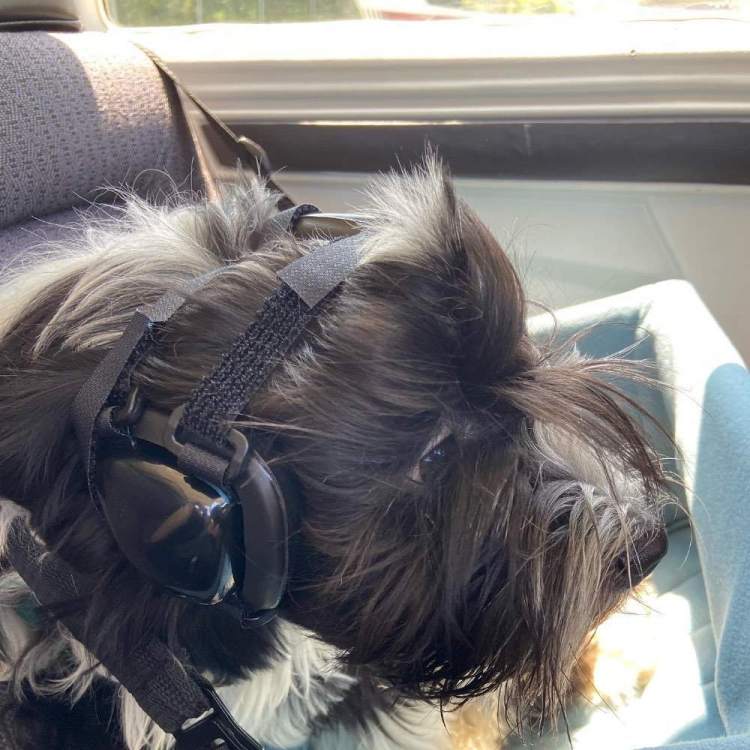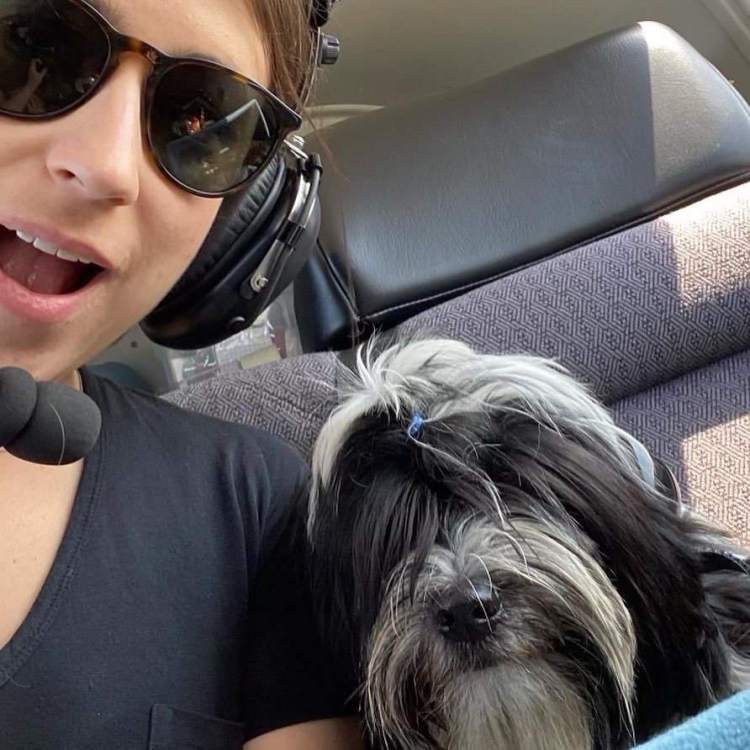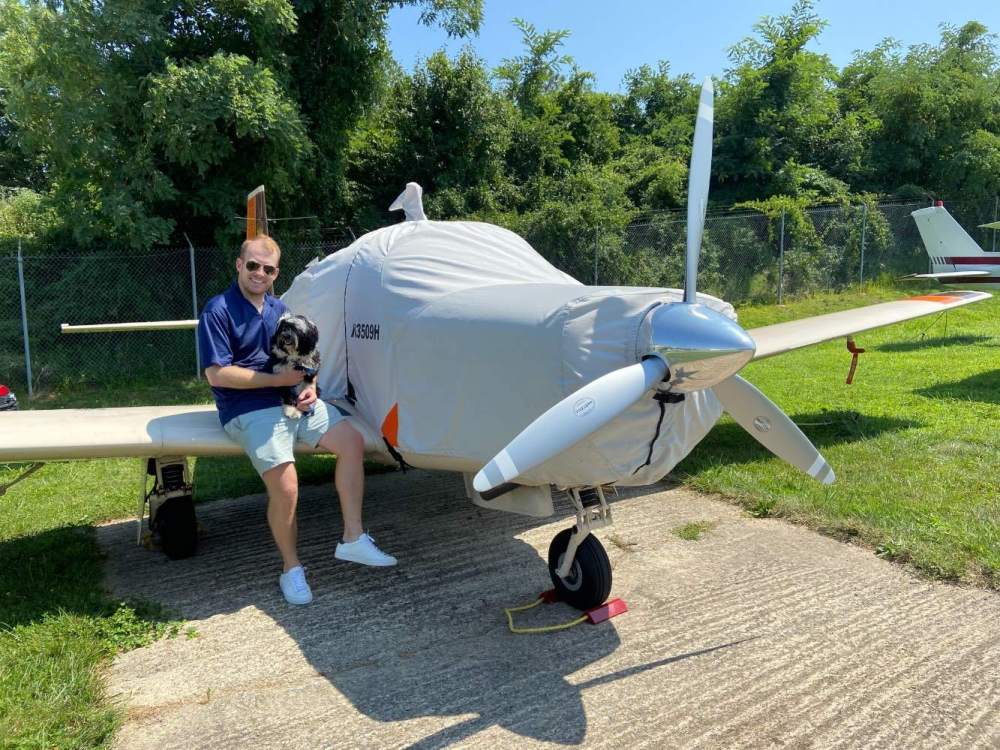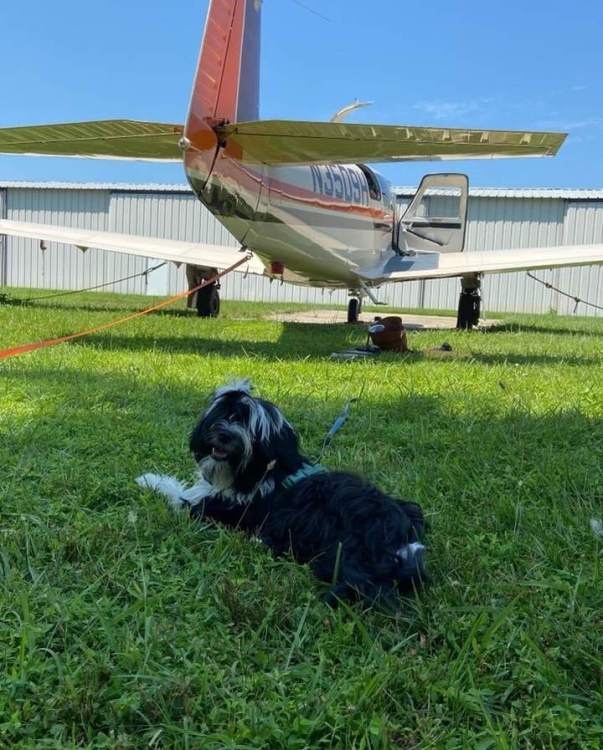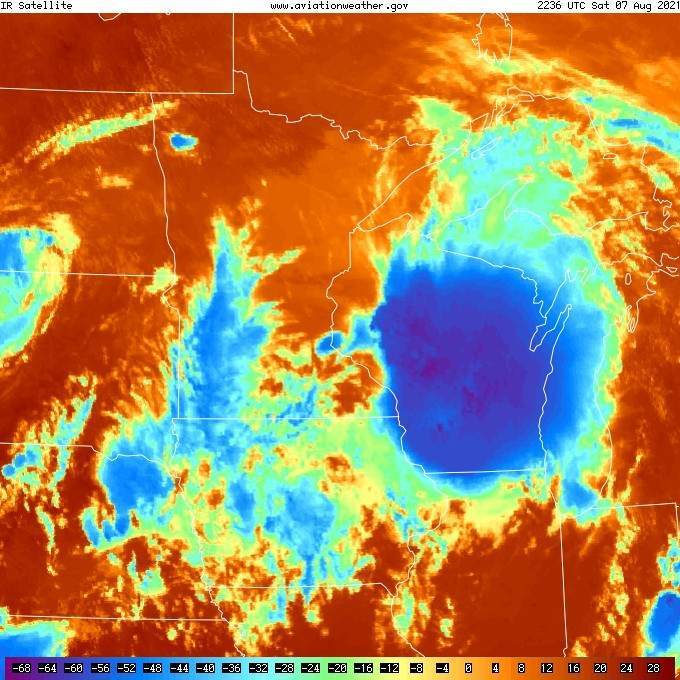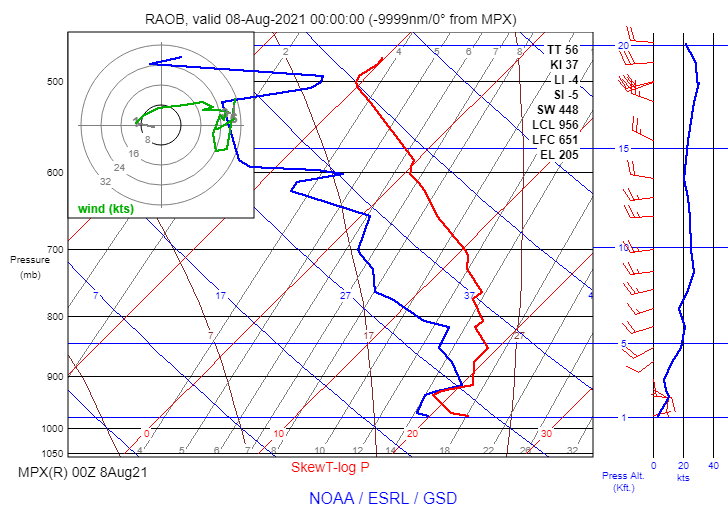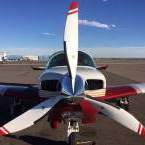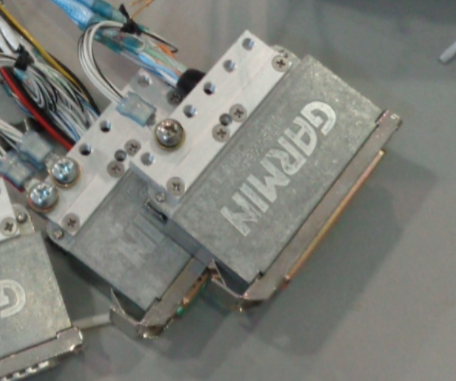Leaderboard
Popular Content
Showing content with the highest reputation on 08/09/2021 in all areas
-
I dont believe that the images are artifacts , Its not going to artifact just the wings and the tail , Those wings ARE folded up , both of them , The reason the plane hit at the attitude it hit is because the wind drag of the wings righted the aircraft , The fact parts were shed and fell seperately concludes a structural failure , No way Corrosion , Both the wings and tail would have to have been severely corroded , Sometimes things are exactly what they seem... The takeaway here is not the wings breaking , but the factors leading up to it....6 points
-
I apologize for the stupid question, but if you don’t care how fast it is and your only purpose is “hour building” have you considered a 152? It’s going to be a lot cheaper than a Mooney. On the other hand, if you want an awesome, fast airplane to travel places then you’re looking in the right place.6 points
-
The fire went out fast. Both wing parts are available and I would think the part that went through the fuselage didn't have enough time to completely burn. So the whole wing should be available to see where it failed. Given the wing was stress tested to 9½ Gs before the "jig" broke, I found it shocking to see the wings fold, if that is what happened. The main spar is an I-beam stressed for the vertical. Had it folded back that would be one thing, but to fold in the vertical where its strength is, that is something unbelievable.6 points
-
The eye witness said they saw the airplane in a steep left bank and then rolled and pulled up as the wings folded. Rolling g’s as they call it is higher on the wings than straight g pulls. In acrobatic formation flying in the military we had g limits for the T-37. 6.7 g and a lower rolling g limit. So we were alway taught to roll then pull because if you combined the roll and pull you will exceed the limit of the wing. Look at fighter jets when they do airshows it’s always a roll then a pull or pull then a roll never a roll while pulling. And even upset training we now get in the airlines they explained that you have to unload the wing first and then roll to a level horizontal then pull the nose back up. If you rolled while pulling it would over g the airplane and you had to try the maneuver again. They explained that the sim has the data derived from airbus test pilots with sensors mounted to the structure and performing upset recovery and then establishing the limits to not exceed in the sim. so even if the mooney wing was tested to over 9 g’s that was not a rolling g test and the wings will snap sooner than a straight g pull.5 points
-
this one doesn't seem all that mysterious to me. LOC on an instrument approach (meandering across the LOC) due to incapacitation, vacuum / instrument failure, or other unknown, break out of the overcast at low altitude in unusual attitude at warp 9, big hard pull, and that's it. Very sorry for the loss. -dan5 points
-
A claimed eye-witness account in the youtube comments: "I saw the whole thing from start to finish. I was standing by my car in the holiday gas station across the street when I heard a low flying airplane, I looked up to see it approaching from the southwest in a steep left bank to the north, diving, and at a high rate of speed. It appeared the plane then attempted to level off abruptly at which point both wings folded up and it started plummeting to the ground. There were some small pieces of debris falling off, sounds like there were parts of the tail section found in yards to the south. It looked for a moment that the plane was going to come down right where I was in the parking lot but it passed overhead and hit the ground across the street. Have not heard anyone else mention the wings folding up but it was plain as day to me and also clearly visible in this footage right before impact."4 points
-
If that ADSB track is correct the aircraft descended 1100ft in 3 seconds. That’s a vertical speed of 22,000 fpm! If start GS was 145 kias, and end was 121 kias (lost 24 kias ground speed). If accelerating that loss was due to a vertical component of acceleration and the total velocity vector could still be increasing over time. So horizontal velocity vector was near 121 kts. Vertical velocity vector was somewhere near 218 kts straight down. Distance between the 5th ping and the 1st (last) ping is about 500 ft on the map. The descent angle vector was about 63 degrees down. Total velocity vector was an estimated (just estimated if I remember any basic physics ) - 250 kts at least if I plug it into a vector calculator ( @aviatoreb help request). If we look at the ultimate load factor chart from the commercial pilot syllabus, we’d see that when Vne is exceeded structural failure can be expected to occur. When Vne exceeded and a load factor applied (say he pulled a load factor of more than 1), control surfaces and structural parts can and will be shed. Someone who’s good at math and has had more than an hour sleep help me out here.4 points
-
3 points
-
3 points
-
I'm leaning toward the funny wing shape being an artifact of the slow CCD sensor on the security camera. It starts scanning the image at the top of the screen, moving down one line of pixels at a time. During that time, the wing moved, just like when our spinning propellers get turned into wavy lines or venetian-blind-like objects. Never heard of anyone sending their prop out for overhaul because it looked curvy in a photograph. CCD images in modern cameras are completely unrelated to photographs taken with a real camera that focuses light onto film.3 points
-
The reason why so many people go the CFI route is that it pays you while you build hours, same reason to go the military pilot route. You can get the 1200 hours paying your own way but then you are out that money when you have the 1200 hours. There are cheaper ways to build hours than with a fast complex airplane. Now if your mission is to go places quickly on as little of fuel as possible then a mooney will fit nicely for you.3 points
-
I think a lot of use are having a hard time believing our overbuilt Mooney wings can actually fail and taco up like that. Something really bad happened up there and hopefully there is enough clean wing spar left to do the analysis. Sad deal, RIP pilot and passengers!3 points
-
3 points
-
My 2006 Acclaim is non-WAAS, it was exported to Brazil and I bought it here. I was going to buy the GIA-Ws but I ended up holding off as there is no WAAS here in South America and if they come up with an NXi upgrade path I would prefer that to simply upgrading the GIA's and being stuck with the legacy G1000. I talked to Don Maxwell in Longview last year and he was pretty sure the new management at Mooney was going to come up with an upgrade path.3 points
-
John, I assumed the accident was 5:40 pm CDT based on the Flightaware track? At that time the accident area was dominated by a thin stratocumulus deck. The only cell was over 30 miles to the southeast. This cell was rapidly dissipating and moving ENE well south of the MSP area. The IR image I posted earlier also shows just a stratocumulus deck in the immediate area of the accident. There was no deep, moist convection within 30 miles. I also checked the Level II NEXRAD to see if there were any outflow boundaries passing through the approach corridor to FCM. Didn't see any. The only thing I see in the NEXRAD shows a stabilizing atmosphere setting in with time.2 points
-
Yes, there was a RAOB taken pretty close to the time and location of the site of the crash. This shows the bases of this stratocumulus deck were ~1200 ft AGL and tops were ~2700 ft MSL; so the clouds were less 1,000 feet deep. The sky was overcast which is also seen on the IR satellite imagery. So an instrument approach would be necessary given the weather at FCM. KFCM 072353Z 09007KT 9SM OVC012 22/19 A2977 RMK AO2 SLP077 T02220194 KFCM 072253Z 06007KT 10SM OVC013 23/19 A2976 RMK AO2 SLP075 T02280194 KFCM 072153Z 08010KT 9SM OVC011 22/20 A2977 RMK AO2 SLP078 T02220200 KFCM 072100Z 08009G17KT 10SM OVC011 22/19 A2978 RMK AO2 T022201942 points
-
Within a one month period we have been made aware of two incidents involving Mooneys and significant overspeed events, with very different outcomes. In the incident in Canada (reported in a separate thread in this section) an M20F was reported to have reached 235 kts in a loss of SA due to primary ADI failure in IMC. The pilot was able to recover after breaking out and made a normal landing. Hopefully the NTSB will be able to perform detailed metallurgical analysis on the structural components (wings, spar, empennage) and, combined with the flight data that has been presented here, develop a sequence of the failures. I suspect I am not the only Mooney owner that, due to latency in Wx data, inadvertently entered a cell in IMC. I have been amazed that the airplane could be in one piece after exiting. Our aircraft of choice is extremely strong, but there are limits. Prayers for the families and friends of those who died.2 points
-
If you look at 18:39:22 and 18:39:29. In 7 seconds the aircraft went from -2000FPM to +2000FPM. I hope that you've never had a ride like that in IMC. That kind of maneuvering, the associated affects on the inner ear and the instrument lag have the makings of severe spatial disorientation. Couple that with rusty instrument skills and the odds are not good.2 points
-
Agreed. Initial observations from FlightAware gave a very benign picture of the final moments. After looking at the detail from ADS-b Exchange, it's pretty obvious.2 points
-
The wings were not detached. They were attached and folded up, creating a significant nose-up condition with all that drag way up high. Half of the horizontal stabilizer, which would help pitch the nose down, was missing. The other half most likely folded up. The plane had experienced a significant structural failure before coming into frame.2 points
-
2 points
-
The descent rate data is striking, and I must walk back my degree of incredulity of the in flight spar failure. I end up agreeing with those who are effectively saying "stop arguing about whether the spar was intact or not when an otherwise unflyable plane struck the ground - none of us need a spar in an unrecoverable condition." One could imagine that tail flutter during the brief initial 6000ft/min descent depicted and/or a hard attempt to pull out of that dive disintegrated the stab/elevator, precipitating the final 22000ft/min descent. Maybe that initial hard pull even momentarily created the Gs needed to compromise the spar? Then somewhere between the start of the steepest vertical descent of an unflyable aircraft and the moment of ground impact, the spar snapped outright. That type of chain of events still seems much more likely than any structural failure as a primary cause of this tragedy.2 points
-
My background: I bought my 1963 180hp Mooney M20D approximately 5 years ago with 80 hours total time. I'm now a 1,500 hour Captain flying Part 135 Cessna 208 Caravans for cargo, and as of today, just received a CJO for PSA Airlines as a FO on the CRJ series. Owning a plane is such an invaluable experience to have. The costs will be higher, but the memories I have the last 6 years of traveling all over the country, meeting many new friends (some from here!) and just overall experience-building is going to only help you in the long-run. I did NOT go the CFI route, primarily because I was hired into survey as soon as I completed my commercial, but I still want my CFI so I can become a "Mooney CFI". The CFI ticket will help you in the long run with stuff like book knowledge that is needed when you make it to the commercial world. There are some things I consider myself deficient in while my peers excel at because they have years of FAR/AIM items memorized. But at the same time, us (owners) have the added benefit of more frequent experience, as well as more quality experience. For example, during my 135 Captain check ride, we were shooting approaches. ILS and GPS, autopilot and no autopilot. During the last part, my examiner said to me: "okay, lastly, I want to see what everyone has the most trouble with- the hand flown VOR-A approach". You should have seen the shit-eating grin I had on my face. He quickly realized it and asked: "why are you smiling like that?". My only reply: "hand-flown VORs are the only approaches I've been flying in my 1960s Mooney for the past 6 years". I'm trying to stay humble, but at the end of the ride he commented that "owning your plane has a definite advantage- your hand flying coordination is impeccable" If you are trying to time-build, nothing is faster than doing aerial survey. I logged about ~140hrs/month in a 172. Pay sucks, but you're actually flying the airplane, to within tenths of a degree of heading, +/- tens of feet, and +/-10 kts for 5-8 hours a day. Rather than letting some primary student get to fly the whole time while he sits back and tries to kill you. But again, the book knowledge and ability to put "CFI" on your resume will only help. Re: your Mooney questions, if you dont need the backseaters, just opt for a 180-200hp short body like the C or E. No need to go fast, you're talking 10-15 minutes over the course of hundreds of miles for a plane thats $50,000 more. Just get something turn-key, nicely-equipped and was meticulously maintained. For an O-360, you can expect between $25,000-$30,000 for a proper overhaul with 3-6 months downtime. But the majority of Cs and Es were made in the 60s and 70s. If you are looking at a 1980s timeline, you're looking at a J, which will consume most of your budget just in initial acquisition costs. Paint can be between $10k-$20k and about 2 months downtime. Avionics can go from $5k-100k depending on what you want, with timeline anywhere in the middle. It seems youre trying to buy a forever plane and use it to time build. Nothing wrong with that, but understand having a AOG (aircraft on ground) for mx, upgrades, paint, isnt going to help you build time. My $0.02- get a solid, older 1960s or 1970s C or E model with GPS and maybe an autopilot for $80k, and use the rest for unplanned MX and go buy a shit ton of fuel and fly all over the country. Feel free to PM if you want to chat further.2 points
-
What makes it all the more puzzling is that there’s absolutely no data in flight aware that indicate the aircraft was subjected to the speed nor the pitch change needed to generate the force required to compromise the spar.2 points
-
2 blocks away is not that far. So they probably separated just prior to impact. I'm done speculating. Very tragic event. I feel for the families. Not supposed to turn out this way.2 points
-
2 points
-
You're fooling yourself. Somehow the camera distorted ONLY the wings? The fuselage isn't distorted at all, even though it was moving in the same direction, but it somehow stretched the wings to exactly the length and shape they would be if they folded up? Listen to yourself.2 points
-
More important reason to go the CFI route. You never really understand something until you have to explain it and teach it. (Try and explain holding patterns and entries for instance) You don't know how many ways to do something wrong, until you teach it. You don't know why we do the things the way we do, until you see it done wrong.2 points
-
Review of additional pieces of info…. Soooo much info coming in so quickly…. The Kathryns report really captures extensive detail…. including the NTSB interview. and the best collection of ADSB data, better than flightaware for most data points available at the end of the controlled flight https://globe.adsbexchange.com/?icao=acac80&lat=44.856&lon=-93.669&zoom=13.8&showTrace=2021-08-07×tamp=1628375982 @1980Mooney is showing better ADSB data in his post above than I have captured here. Actual flight data shown on the chart… The flightaware data is about one point every minute or so… The globe.ADSBexchange data is closer to every few seconds or so… Expect that…. 1) Something has caused the pilot to lose control in IMC 2) A high descent rate occurs 3) plane sheds parts of the tail 4) Wings fold and are shown post accident as two separate parts. 5) plane impacts the ground 6) It will be important for the investigation to know if CO, or exhaust system failure has anything to do with this accident… 7) Some tough weather close by, may be a consideration… 8) the order of this list may not be accurate…. PP thoughts only, not an accident investigator… Best regards, -a-2 points
-
I think we have to be careful not to simply dismiss the break of the wing spar as impossible because we wish it to be so. Yes, no spar so far has broken in flight but there is always a first time. Here it looks like we are seeing a multiple structural failure, which obviously can have a tremendous effect on our fleet. But that does not mean we have to go into denial and think that our eyes or the video deceives us just because we can not imagine it. On the opposite. If there is a problem, it needs to be addressed.2 points
-
I know the last two radar tags are probably not very accurate. But simple math with the information there shows that the airplane would been around 265kts of airspeed. (121kt ground speed over 2 sec=410ft horizontally, 800ft vertically over 2 sec, = aircraft traveling 899ft in 2 sec. 450ft/sec = 265kts) I'm guessing that last return is about the point they exited the overcast and it happens to be about 2 blocks south of the impact. The natural instinct would be to pull when you see all that ground in front of you, I'm sure I would have done the same. I'm betting the structural failure happened in that last 3 sec to a structurally sound air frame. It's all so sad. My thought's and prayers are with the families. Dan2 points
-
@carusoam@Cruiser Thank you! also found some contacts from old posts. Will try calling them tomorrow2 points
-
There are many ways to calculate approximate power. Here is the best resource I've found. Written by a professional test pilot, it lists pretty much every method, discusses errors, and provides a list of resources including some spreadsheets to automate the calculations. The Lycoming paper showing how to calculate power from fuel flow both LOP and ROP is fascinating. Skip Determining Engine Power.pdf2 points
-
Thanks everyone for the tips! We took Quincy for his first flight today. Lots of time on the ground getting familiar with the plane, and we went at his pace. The flight was a short hop around the patch (as short as the DC SFRA allows). We got ear protection and he was very good with keeping it on. Used his ‘car bed’ and he seemed content. Slow climbs and descents (300-400 fpm) for his ears. My wife sat in the back for this first flight too. All in all, success! We’ll gradually expand the distance and maybe get him used to a few $100 hamburgers for him and us soon. Thanks for all your tips.2 points
-
To my eye, this version seems to corroborate those who say the right wing hit first and that's what snapped the spar. Then there are those who say it clearly shows the plane coming down all the way with wings folded - that still doesn't seem to be the case in the first image of the plane. Perhaps everyone is suffering from confirmation bias when looking at the video, though spar failure in flight seems less likely in absence of this somewhat confusing visual information. The loss of tail components before impact seems most likely due to overstressed components from overspeed flutter and/or hard manipulation of the elevator during the final moments of this tragic chain of events. Very sad to hear three lives were lost but glad for lack of casualties on the ground.2 points
-
Brad, Not that I can see. There was a pretty nasty MCS that was to the ESE of the area as you can see on the IR satellite, but the tops in the area at the time of the accident were pretty low so the likelihood of any deep, moist convection was near zero. Tops in the area were around 3,000 ft MSL based on this RAOB shown below that was launched about 15 minutes prior to the accident and only about 5 miles away. That's about as good as you are going to get for weather info. KFCM 072353Z 09007KT 9SM OVC012 22/19 A2977 RMK AO2 SLP077 T02220194 KFCM 072253Z 06007KT 10SM OVC013 23/19 A2976 RMK AO2 SLP075 T02280194 KFCM 072153Z 08010KT 9SM OVC011 22/20 A2977 RMK AO2 SLP078 T02220200 KFCM 072100Z 08009G17KT 10SM OVC011 22/19 A2978 RMK AO2 T02220194 There was a wind shift right at the tops which is very common with stratocumulus decks that are largely created because of low-level instability and moisture (ground was fairly moist). The air tends to dry out where the inversion stops because the winds switch to a more southwesterly (dry) flow.2 points
-
Some new details on KR including a video interview with the NTSB rep. Notably, he said that portions of the left elevator and left horizontal stabilizer were found two blocks away from the crash. http://www.kathrynsreport.com/2021/08/mooney-m20m-257-tls-bravo-n9156z-fatal.html2 points
-
A control check is part of every pre-takeoff checklist. Let's all be diligent out there. Hindsight is a wonderful thing, but pulling the mixture will stop power immediately and the plane would probably recover. If I'm ever in that situation I hope I think of that.2 points
-
only thing I was thinking was if there was pilot incapacitation and maybe a right seater was attempting to fly the plane. obviously total speculation.2 points
-
2 points
-
After doing the tire dance for the last 35 years, I finally broke down and bought the Harbor Freight bead breaker. It works great.2 points
-
2 points
-
Is it that unbelievable that the airplane broke up, or are some of you really that hard headed? in the video, at least the left horizontal stab and elevator are missing. The wings are clearly folded up indicating that the spar snapped. a camera isn’t going to create artifacts like that. It’s not possible and that’s not what happened. What you see is what you’ve got.1 point
-
“I completely agree Anthony. However, I remember reading somewhere that the up and down drafts in a tstorm can cause virtually instantaneous changes in the airspeed that the wing experiences. In other words, the aircraft may be traveling horizontally at Vne, but is struck by up or down drafts many times that speed, which means the wing is well over Vne. Especially so in the “sheer wall” between where the storm is sucking up warm moist air, and where it is dumping down cold air and rain.” pilots unfamiliar with flying in unpredictable, turbulent air mass instinctively engage autopilot when they sense trouble. The is precisely the opposite action one should take. We flew thunderstorm research in the late 80’s / early 90’s. We ALWAYS hand flew the aircraft and allowed the up and downdraft to take us. I suspect we all know it doesn’t take a significant storm + autopilot engaged at the wrong time, to break things. Very curious to learn how the horizontal stab and elevator failure occurred. ”there but for the grace of God”1 point
-
Nope. That's one downside of the Lightspeeds. You get lemo plug with no battery compartment, or dual plugs with a battery compartment. They don't make an adapter for either direction.1 point
-
Agreed with that; I'm partial to corrosion as I struggle to see what repair, other than a center section spar improperly done repair, could cause this. The mystery, though, is the wing failure seems to have occurred IMMEDIATELY prior to the plane striking the ground. Something else entirely must have happened well before the plane's wings were torn off. How did the pilot get to that situation?1 point
-
The tower controllers at FCM are just exceptional, I fly with them nearly everyday. Over several years I have listened to them deal professionally with all manner of unusual situations, including me on one or two occasions, and I have found myself in extreme turbulence on final there from which that tower quickly rescued me. I am going to speculate that tower called two or three times in succession at the end of that tape because it had just lost the aircraft off the scope. They were trying to help.1 point
-
This is a very simple, not new idea … but a nice addition to the mooney.com home page that makes clear there’s a lot of these planes flying. This is just linked from https://mooney.com/ and points to FlightAware, but has a time parameter and a custom id in the url that I won’t try to recreate here. Anyway, good work to the Mooney PR team. This is a nice idea.1 point
-
Not very common at all… But, on MS… you will see everything that happens in the Mooney world. Including thousands of miles away in places you may never even heard of… Best regards, -a-1 point



